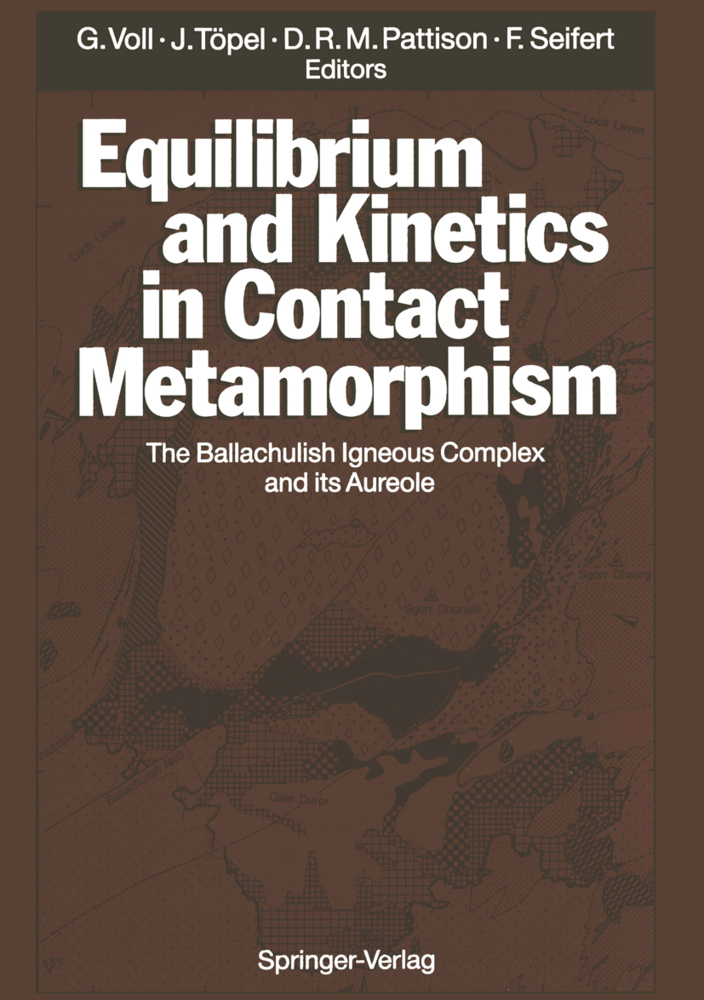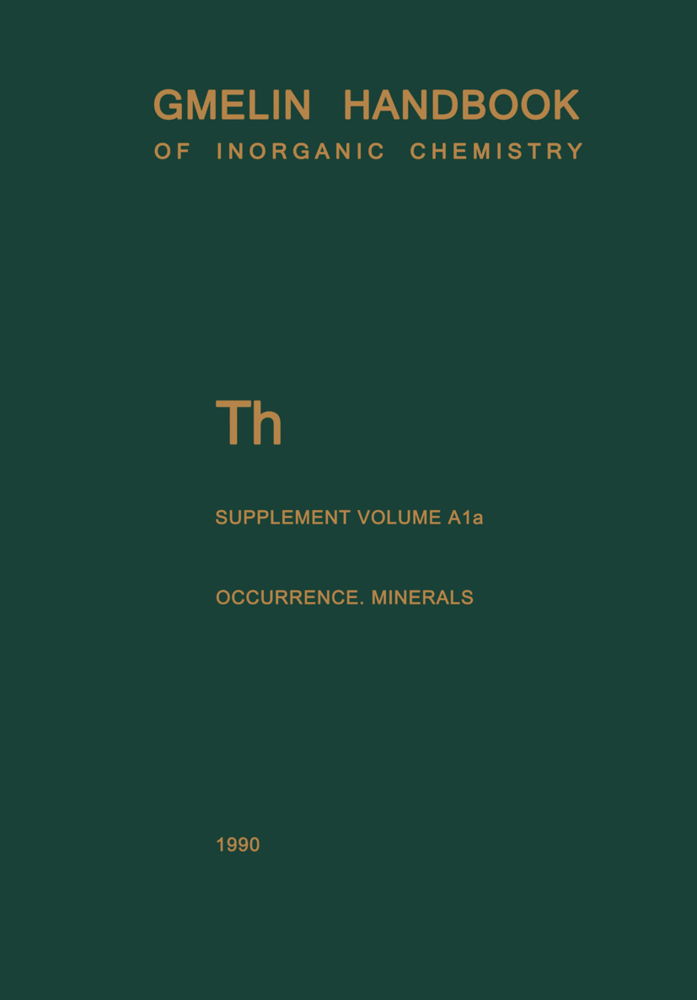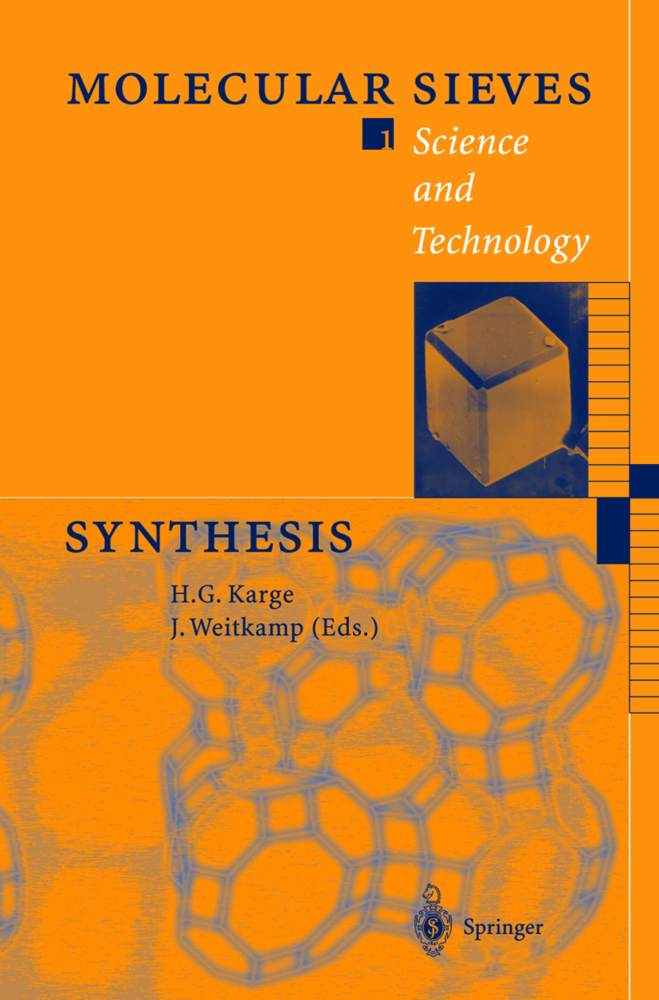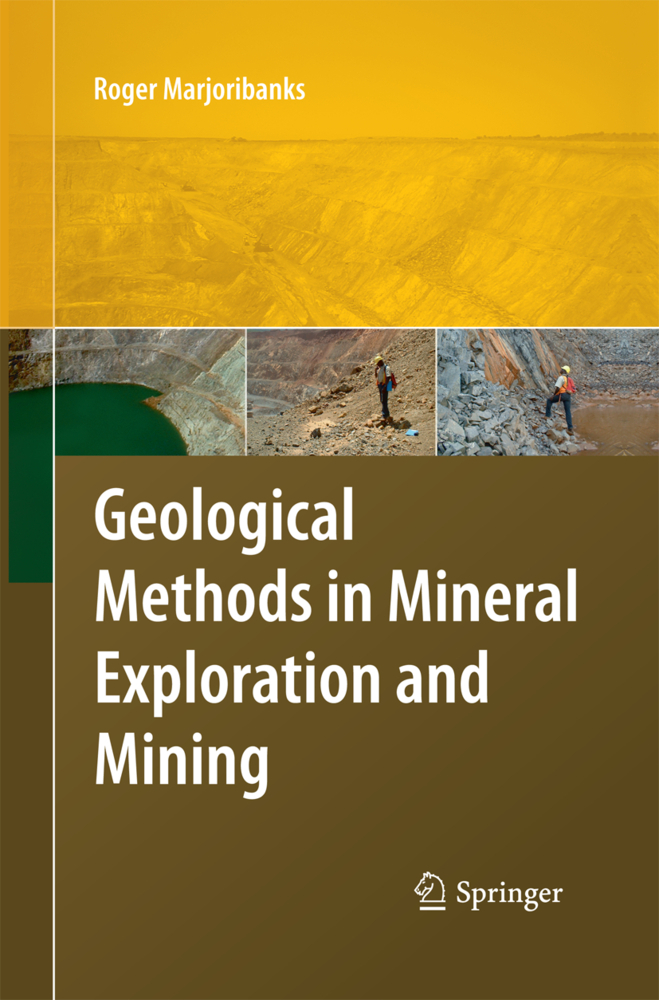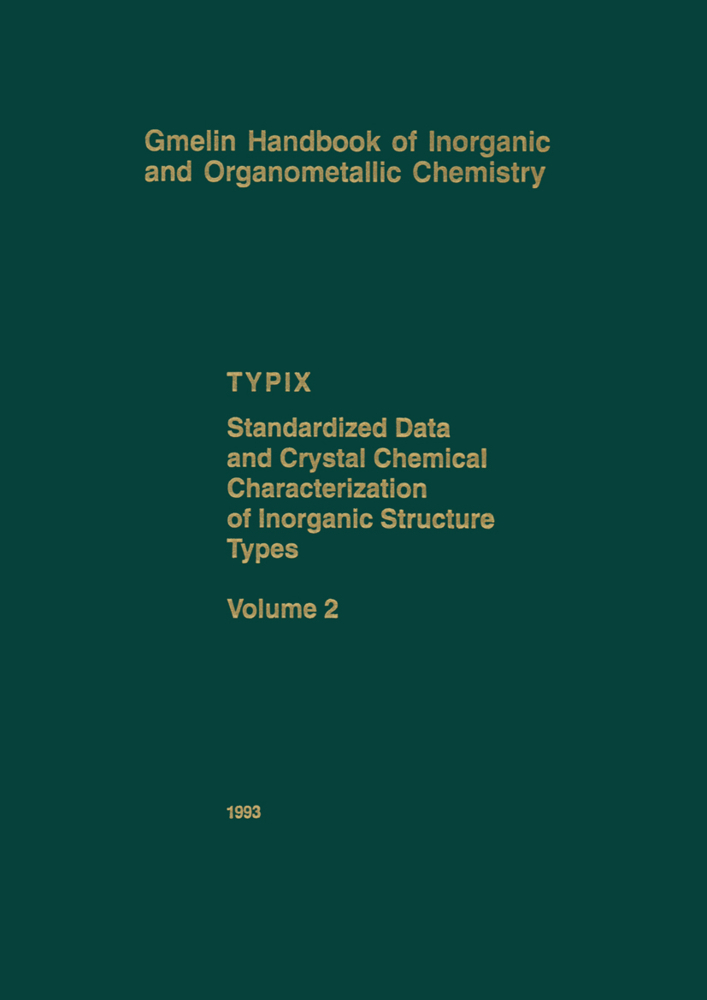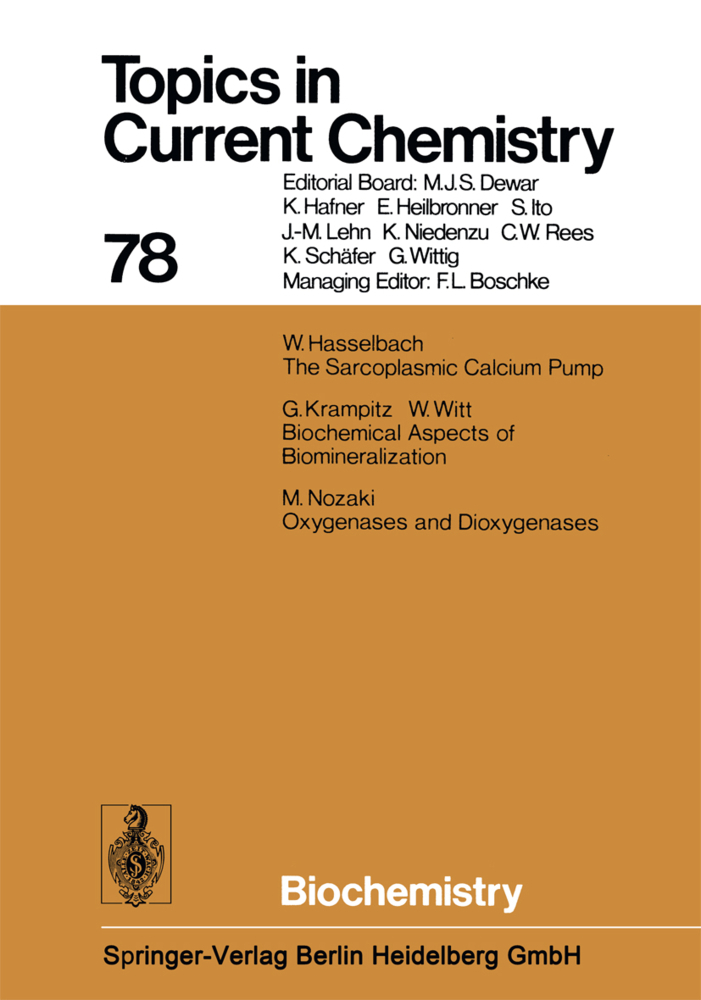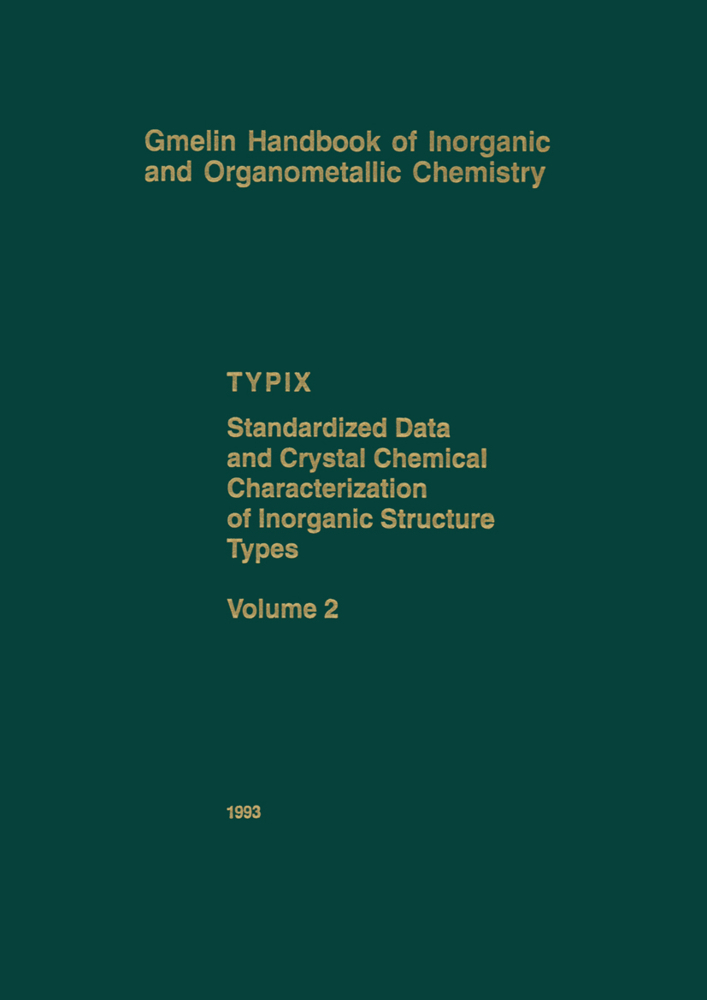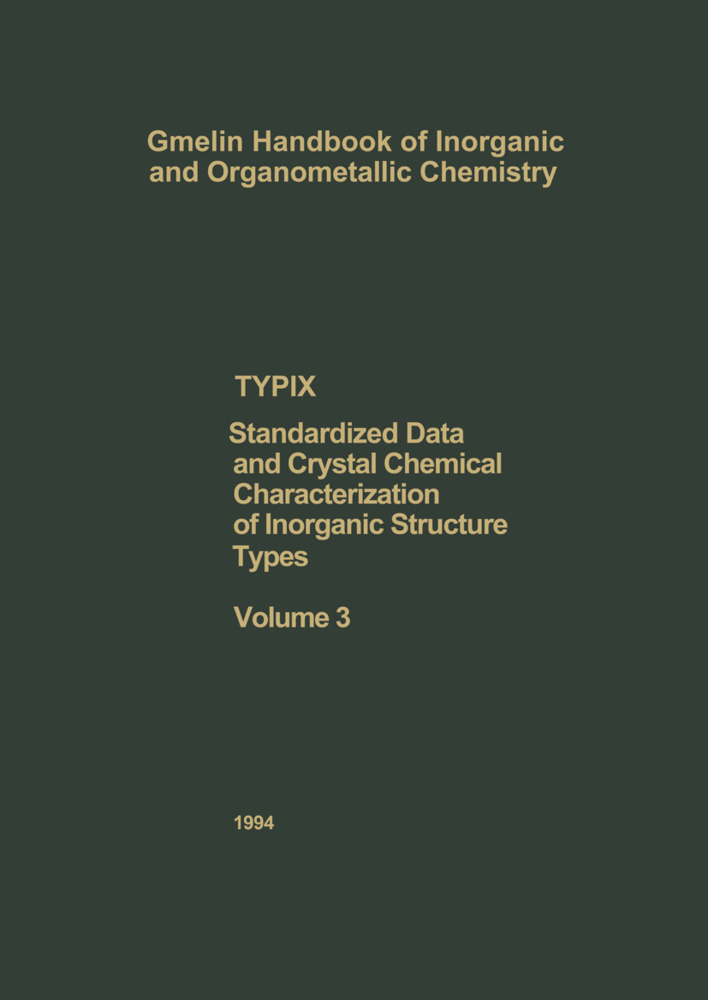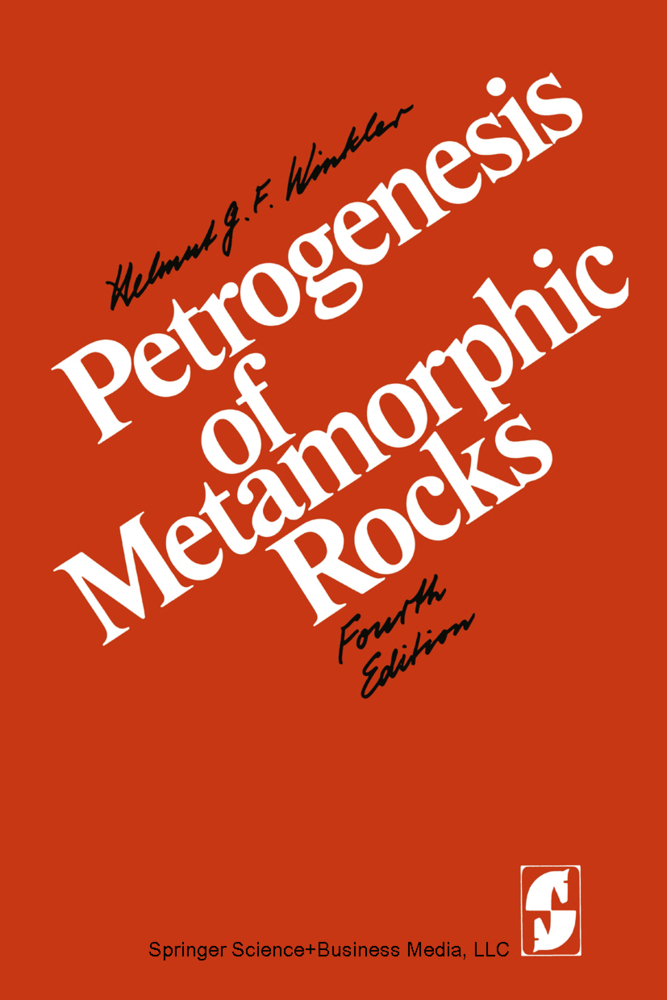Structural Chemistry of Silicates
Structure, Bonding, and Classification
Structural Chemistry of Silicates
Structure, Bonding, and Classification
As natural minerals, silica and silicates constitute by far the largest part of the earth's crust and mantle. They are equally important as raw materials and as mass produced items. For this reason they have been the subject of scientific research by geoscientists as well as by applied scientists in cement, ceramic, glass, and other industries. Moreover, intensive fun damental research on silicates has been carried out for many years because silicates are, due to their enormous variability, ideally suited for the study of general chemical and crystallographic principles. Several excellent books on mineralogy and cement, ceramics, glass, etc. give brief, usually descriptive synopses of the structure of silicates, but do not contain detailed discussions of their structural chemistry. A number of monographs on special groups of silicates, such as the micas and clay min erals, amphiboles, feldspars, and zeolites have been published which con tain more crystal chemical information. However, no modern text has been published which is devoted to the structural chemistry of silicates as a whole. Within the last 2 decades experimental and theoretical methods have been so much improved to the extent that not only have a large number of silicate structures been accurately determined, but also a better under standing has been obtained of the correlation between the chemical composition of a silicate and its structure. Therefore, the time has been reached when a modern review of the structural chemistry of silicates has become necessary.
1.2 Technical Importance of Silicon
1.3 Diversity of Silicon Compounds
2 Methods to Describe the Atomic Structure of Silicates
2.1 Model Representations of Silicate Structures
2.2 Treatment of Tetrahedrally Coordinated Cations in Silicates
3 Chemical Bonds in Silicates
3.1 The Silicon - Oxygen Bond
3.1.1 Coordination Numbers of Silicon
3.1.2 Bond Lengths and Bond Angles in Silicates Containing [SiO4] Tetrahedra (Tetraoxosilicates)
3.1.2.1 Correlations Between Si-O Distance, Oxygen Coordination Number, and Bond Strength
3.1.2.2 Correlations Between Si-O Distance and Bond Angles
3.1.2.3 Correlations Between Si-O Distance, Oxygen Coordination Number, Bond Strength, and Si-O-Si Angle
3.1.2.4 Influence of Structural Disorder on Si-O Distances
3.1.2.5 Si-O-Si Angles
3.1.3 Bond Lengths and Bond Angles in Silicates Containing [SiO6] Octahedra (Hexaoxosilicates)
3.1.4 The Nature of the Si-O Bond
3.1.4.1 The Ionic Model
3.1.4.2 The Covalent Model
3.1.4.3 Nonbonded Interactions
3.1.4.4 The Ionicity of the Si-O Bond
3.2 The Cation - Oxygen Bond, M-O, and Its Influence on the Si-O Bond
3.2.1 Electropositive Cations
3.2.2 Electronegative Cations
4 Crystal Chemical Classification of Silicate Anions
4.1 General Principles of the Classification
4.2 Parameters Used in the Crystal Chemical Classification of Silicate Anions
4.3 The Crystal Chemical System of Silicate Anions
4.4 Periodic Character of the Crystal Chemical Classification of Silicate Anions
5 Nomenclature and Structural Formulae of Silicate Anions and Silicates
5.1 Nomenclature
5.1.1 Chemical Nomenclature
5.1.2 Mineralogical Nomenclature
5.2 Structural Formulae
6 Crystal Chemical Classification of Silicates: General Part
6.1 Mixed-Anion Silicates
6.2 The Crystal Chemical System of Silicates
6.3 Further Subdivision of Silicates
6.3.1 Atomic Ratio Si: O of Silicate Anions
6.3.2 Degree of Chain Stretching
6.3.3 Silicate Anion Symmetry
6.3.4 Cation - Oxygen Polyhedra
6.4 Silicate Classification Procedure
6.5 Shortcomings of the Crystal Chemical Classification
7 Crystal Chemical Classification of Silicates: Special Part
7.1 Silicon Compounds with [SiO6] Octahedra (Hexaoxosilicates)
7.2 Silicates Containing [SiO4] Tetrahedra (Tetraoxosilicates)
7.2.1 Silicates with Edge-Sharing Tetrahedra
7.2.2 Silicates with Corner-Sharing Tetrahedra
7.2.2.1 Oligosilicates (Sorosilicates)
7.2.2.2 Ring Silicates (Cyclosilicates)
7.2.2.3 Single Chain Silicates (Monopolysilicates)
7.2.2.4 Multiple Chain Silicates (Oligopolysilicates)
7.2.2.5 Single Layer Silicates (Monophyllosilicates)
7.2.2.6 Double Layer Silicates (Diphyllosilicates)
7.2.2.7 Tectosilicates
7.2.2.8 Silicates with Interpenetrating Anions
7.3 Mixed-Anion Silicates
7.4 Estimated Frequency Distribution of Silicate Species
8 Other Classifications of Silicates
8.1 Early Classifications of Silicates
8.2 Rostov's Classification of Silicates
8.3 Zoltai's Classification of Silicates
8.4 Geometrical Classification of Tectosilicates
8.4.1 Connectedness
8.4.2 Secondary Building Units
8.4.3 Chain-Like Building Units
8.4.4 Layer-Like Building Units
8.4.5 Polyhedral Building Units; Framework Density
8.4.6 Concluding Remarks
8.5 Silicate Classification Based on Non-Silicon Cation - Oxygen Polyhedra
9 General Rules for Silicate Anion Topology
10 Influence of Non-Tetrahedral Cation Properties on the Structure of Silicate Anions
10.1 Influence of Cation Properties on the Conformation of Unbranched Single Chain Anions
10.1.1 Conformation of Unbranched Silicate Single Chains
10.1.2 Qualitative Correlations Between Chain Conformation and Cation Properties
10.1.3 Semiquantitative Correlations Between Chain Conformation and Cation Properties
10.1.4 Crystallochemical Interpretation of the Correlations
10.1.4.1 Correlation Between Stretching Factor and A
1 Introduction
1.1 Occurrence and Abundance of Silicon1.2 Technical Importance of Silicon
1.3 Diversity of Silicon Compounds
2 Methods to Describe the Atomic Structure of Silicates
2.1 Model Representations of Silicate Structures
2.2 Treatment of Tetrahedrally Coordinated Cations in Silicates
3 Chemical Bonds in Silicates
3.1 The Silicon - Oxygen Bond
3.1.1 Coordination Numbers of Silicon
3.1.2 Bond Lengths and Bond Angles in Silicates Containing [SiO4] Tetrahedra (Tetraoxosilicates)
3.1.2.1 Correlations Between Si-O Distance, Oxygen Coordination Number, and Bond Strength
3.1.2.2 Correlations Between Si-O Distance and Bond Angles
3.1.2.3 Correlations Between Si-O Distance, Oxygen Coordination Number, Bond Strength, and Si-O-Si Angle
3.1.2.4 Influence of Structural Disorder on Si-O Distances
3.1.2.5 Si-O-Si Angles
3.1.3 Bond Lengths and Bond Angles in Silicates Containing [SiO6] Octahedra (Hexaoxosilicates)
3.1.4 The Nature of the Si-O Bond
3.1.4.1 The Ionic Model
3.1.4.2 The Covalent Model
3.1.4.3 Nonbonded Interactions
3.1.4.4 The Ionicity of the Si-O Bond
3.2 The Cation - Oxygen Bond, M-O, and Its Influence on the Si-O Bond
3.2.1 Electropositive Cations
3.2.2 Electronegative Cations
4 Crystal Chemical Classification of Silicate Anions
4.1 General Principles of the Classification
4.2 Parameters Used in the Crystal Chemical Classification of Silicate Anions
4.3 The Crystal Chemical System of Silicate Anions
4.4 Periodic Character of the Crystal Chemical Classification of Silicate Anions
5 Nomenclature and Structural Formulae of Silicate Anions and Silicates
5.1 Nomenclature
5.1.1 Chemical Nomenclature
5.1.2 Mineralogical Nomenclature
5.2 Structural Formulae
6 Crystal Chemical Classification of Silicates: General Part
6.1 Mixed-Anion Silicates
6.2 The Crystal Chemical System of Silicates
6.3 Further Subdivision of Silicates
6.3.1 Atomic Ratio Si: O of Silicate Anions
6.3.2 Degree of Chain Stretching
6.3.3 Silicate Anion Symmetry
6.3.4 Cation - Oxygen Polyhedra
6.4 Silicate Classification Procedure
6.5 Shortcomings of the Crystal Chemical Classification
7 Crystal Chemical Classification of Silicates: Special Part
7.1 Silicon Compounds with [SiO6] Octahedra (Hexaoxosilicates)
7.2 Silicates Containing [SiO4] Tetrahedra (Tetraoxosilicates)
7.2.1 Silicates with Edge-Sharing Tetrahedra
7.2.2 Silicates with Corner-Sharing Tetrahedra
7.2.2.1 Oligosilicates (Sorosilicates)
7.2.2.2 Ring Silicates (Cyclosilicates)
7.2.2.3 Single Chain Silicates (Monopolysilicates)
7.2.2.4 Multiple Chain Silicates (Oligopolysilicates)
7.2.2.5 Single Layer Silicates (Monophyllosilicates)
7.2.2.6 Double Layer Silicates (Diphyllosilicates)
7.2.2.7 Tectosilicates
7.2.2.8 Silicates with Interpenetrating Anions
7.3 Mixed-Anion Silicates
7.4 Estimated Frequency Distribution of Silicate Species
8 Other Classifications of Silicates
8.1 Early Classifications of Silicates
8.2 Rostov's Classification of Silicates
8.3 Zoltai's Classification of Silicates
8.4 Geometrical Classification of Tectosilicates
8.4.1 Connectedness
8.4.2 Secondary Building Units
8.4.3 Chain-Like Building Units
8.4.4 Layer-Like Building Units
8.4.5 Polyhedral Building Units; Framework Density
8.4.6 Concluding Remarks
8.5 Silicate Classification Based on Non-Silicon Cation - Oxygen Polyhedra
9 General Rules for Silicate Anion Topology
10 Influence of Non-Tetrahedral Cation Properties on the Structure of Silicate Anions
10.1 Influence of Cation Properties on the Conformation of Unbranched Single Chain Anions
10.1.1 Conformation of Unbranched Silicate Single Chains
10.1.2 Qualitative Correlations Between Chain Conformation and Cation Properties
10.1.3 Semiquantitative Correlations Between Chain Conformation and Cation Properties
10.1.4 Crystallochemical Interpretation of the Correlations
10.1.4.1 Correlation Between Stretching Factor and A
Liebau, F.
| ISBN | 9783642500787 |
|---|---|
| Artikelnummer | 9783642500787 |
| Medientyp | Buch |
| Auflage | Softcover reprint of the original 1st ed. 1985 |
| Copyrightjahr | 2012 |
| Verlag | Springer, Berlin |
| Umfang | 354 Seiten |
| Abbildungen | XIV, 354 p. 49 illus. |
| Sprache | Englisch |


